Pandemic Cruising IV: Barcelona to Dover with Emily
Emily flew in to Barcelona to join us for a repositioning cruise from Barcelon to Dover on Carnival Pride. This cruise was especially exciting because we had never been to any of these ports before: Gibraltar, Lisbon and Porto, Portugal, Vigo, La Coruña and Bilbao Spain, Zeebrugge Belgium, Le Havre and La Rochelle, France and our debarkation point, Dover, England.
This was also a special milestone cruise - #25 with Carnival - for me and John. That doesn't get you much but a fancy card. However, it does yield a reward to apply: 25% of the amount of a future cruise as onboard credit for the cruise. We used that on our next cruise. Yippee!
Before getting on to talk about the ports, I'll share my thoughts and observations about the pandemic cruising aspect. I actually don't have a lot to say, because the cruise industry and passengers, like pretty much the entire world, are trying their best to pretend that COVID no longer exists. In terms of protocols, they are still requiring everyone to be vaccinated (or have one of a handful of exemptions), and in the case of Europe, a booster if the vaccination series is more than 6 months old. The other requirement is a pre-cruise COVID test taken within 3 days of sailing. The cruise industry is anxious to eliminate this requirement as well, now that COVID testing for entering the US has been eliminated. In fact, Viking Cruises has already taken this step, and Holland America and P&O have as well for some European itineraries.
On our cruise, there were several people in the quarantine cabins and a few who reported having COVID upon return home. Undoubtedly the numbers were higher since only a portion get 'caught.' Fortunately, vaccinations are holding back serious illness. Unfortunately, I didn't see much mask wearing even when the person was hacking and sneezing. As well, I didn't see much hand washing or sanitizing when entering the buffet.
On the ground, Spain and Portugal were still requiring masks on public transportation, while Gibraltar, France, Belgium and England were not. So, that's where we are, land and sea not much different.
Onward to share our travels ...
Embarkation and Sea Days
Gibraltar
We arranged to do a local tour company's dolphin excursion at this port, so we took our time getting off the ship and taking a leisurely walk to the marina area.
Since we arrived a bit early, we stopped for a coffee and a snack, since we were a bit peckish and our tour fell during lunch time.
Lisbon, Portugal
It was very pretty coming in to Lisbon as the sun was rising. We got to sail under a bridge, which is one of my favorite cruising activities.
For Lisbon, we had decided to visit the national tile museum, which seemed like an interesting focus for a museum, and then explore the city center a little bit, including tasting a couple of local specialties. The tile museum turned out to be quite extensive and interesting, so we were glad we decided to go there.
On our city explore, we visited the Cathedral, stopped at two cafes, and walked through the city gate back to the cruise ship.
Leixões (Porto), Portugal
Vigo, Spain
John and I needed a sea day after lots of hills in Porto, and our big excursion to Santiago de Compostela the next day, so we did not do an excursion. I did walk out into port for some fresh air and easier exercise and saw some cool things.
Emily was more energetic than either of us, so I'm turning this portion of the blog over to her to share her adventures in Vigo...
I was excited for our first port in Spain! During the summer of 2014, I lived and studied in northwestern Spain, and though I’d never been to Galicia, I was interested to see if it reminded me of Asturias at all. I went into the city of Vigo as soon as I could get off the ship.
Vigo did NOT disappoint. Many things about the city reminded me of Oviedo, from the steep and hilly streets to the stone churches and signs in both Spanish and gallego. Businesses in Spain don’t tend to open until 10, so I had the plazas and streets to myself for a while. Remembering a trick I used to do in Oviedo, I bought some water and a fruit snack from a little grocery store. I sat on a bench at the edge of the plaza, watching the deliveries being made and the restaurant owners setting up their tables. When three people asked me for directions, I knew I was settling back into the lifestyle almost as if I’d never left.
I spent the morning and early afternoon exploring the city, with no real plan in mind. Starting with the church I was nearby, I poked my head in and admired the architecture.
I headed down the main shopping street and found myself at Vigo’s modern art museum. I’m delighted to report that many Spanish museums still seem to be free, and I spent a very pleasant 45 minutes with the exhibits by Spanish artists. I climbed hills to another church and let myself get a little turned around in the twisting, medieval-looking streets. One of my favorite activities in Oviedo was to just exist, and I enjoyed that as much in Vigo as I did then.
Living in Oviedo, I discovered a deep appreciation for Spanish food. (In fact, I wrote a blog about it: https://eatyourtentacles.blogspot.com/2015/04/) When I went into Vigo that day, I intended to sample as much food as my stomach would allow. When lunchtime rolled around, I stopped in a little cafe for two of my old favorites. Ensalada mixta, basically a catch-all term for any type of cold salad, and possibly the best dish known to man, bocadillo de tortilla. It is a slice of tortilla española, sometimes called “Spanish omelet” in English, between two slices of warm, crusty bread. Sitting in the cafe, out of the light drizzle, with one of my favorite meals, I felt almost as if I were a student back in Oviedo again. I also sampled some Galician specialties, white albariño wine and chipirones (lightly fried baby squids). Sadly, I did not care for the squid, but the albariño and crusty bread were absolute winners.
But, just as was the case in Asturias, my favorite thing about Vigo was the people I encountered. As a general rule, I found the people of Spain to be very welcoming, helpful, and easy to talk to. I’m glad to report that’s still the case. I spoke with all sorts of people during my day in Vigo! The first church I visited turned out to be a stop on the camino de Santiago pilgrimage, and I had a lovely chat with a group of pilgrims I met outside. The fruit seller laughed when I bought a jar of Spanish olives and told her that was my favorite souvenir. A group of old guys outside a cafe, with their beers and albariño, ended up chatting with me about my time in Asturias for ten minutes after giving me directions and restaurant recommendations for lunch. I got many compliments on my Spanish, and laughed to myself when I started to hear my old Spain accent coming back.
And at every turn, every local I met was delighted that I was visiting again. The stereotypical images of Spain - bullfighting, flamenco music, dry and desert-like terrain, tilting at windmills - are all images from southern and central Spain. As a consequence, northern Spain to this day remains something of a hidden gem, especially for U.S. visitors. Everywhere I’ve been in that part of Spain, from Vigo to Oviedo to Bilbao, the people living there are rightfully proud of just how much their cities and regions have to offer. I would recommend a focus on northern Spain, and even more specifically on Galicia and Asturias, for anyone. I can’t wait to visit again!
La Coruña, Spain
From this port we chose to visit Santiago de Compostela, with a focus on exploring the famous cathedral. For those who aren't familiar, this is the terminus of The Camino de Santiago, also known as The Way of St. James (Iago is Spanish-Galician verison for Jacob/James).
There are many routes throughout Europe that bring one here, but for the pilgrim it is a holy site, as it houses the remains of St. James. Modern pilgrims do the walk for many different reasons, and they arrive by foot, bike and sometimes horse!
There are many stops along The Way that are important spiritual sites for pilgrims. Where Emily studied abroad in Oviedo, one of these stops is found. She met pilgrims there, as well in other places in her travels, and doing the walk is on her bucket list. Of course, I pointed out that this trip actually fit that, because she walked the last half mile or so! I'm glad we got to share this experience with her.
If you are interested in learning more about this pilgrimage, there is an excellent film by Emilio Estevez and Martin Sheen, as well as a book they wrote together inspired by making this film. Recommend!
After our explore, we had time to enjoy some local delicacies.
Bilbao, Spain
To visit the Guggenheim Museum in Bilbao has been on my bucket list for several years, so I was excited to finally get the opportunity.
La Rochelle, France
John and I needed another sea day, so we skipped this port. Turning over the blog to Emily, who ventured into town ...
I didn’t initially have any plans to go into port when we got to La Rochelle. For some reason, the city did not have much of an online presence. Most of the Carnival tours were also to other locations, rather far from the port. But shortly before we arrived, they offered a new walking tour of the actual city. Struck by a little bit of FOMO, I got a ticket and went into port.
I’m so glad I did! La Rochelle is a quiet, normal-feeling small city in southwest France. But it has a very long and fascinating history. It’s been a key trading and seafaring port for centuries, starting in early medieval times. It belonged historically to Eleanor of Aquitaine and, through marriage, to the royal Plantagenet family of England. The Knights Templar had a large presence in the city, and it was a center for Protestant development when the Reformation reached France in the late 1500s. Because of its importance, La Rochelle was functionally independent from the French crown until Louis XIII (1620s, “won” via a nasty 13-month siege). La Rochelle also has some interesting Canadian connections: Champlain, the founder of Quebec, was from the city.
The history alone would make La Rochelle interesting enough. But the city also looks really nice! Many of the buildings are made of local white limestone, giving the city its nickname “the White Town.” It is also very well cared for, with impressively clean streets, buildings, and public toilets. There is also a great deal of green space through public parks all around town, with special attention given to keeping a good biodiversity balance.
We had an hour of free time in our walking tour. I spent it just walking around and exploring town a little bit. I shopped at a produce market with what seemed to be mostly locals. Lots of people speaking French exclusively and, from what I understood, chatting with friends and customers. I got a snack of fresh strawberries at the market, the most delicious strawberries I’ve had since 2015!
I also paid a visit to the Cathedrale Saint-Louis de La Rochelle, which I strongly recommend for its lovely stained glass windows.
Much like Spain, the people of La Rochelle make the city even more enjoyable. They are rightfully proud of their city: when I complimented our guide on how lovely it is, she laughed and said, “Yes. We actually care for our town, unlike…some more famous places.” (Hot take: Paris is not particularly well cared for, and I’m apparently not the only one who thinks so.) I took French in high school and a reading class in grad school, and everyone I spoke to was delighted at how much I was trying. It seemed like everyone I asked for directions or food recommendations had a smile to go along with their help. I felt very welcomed there!
I would absolutely recommend La Rochelle as a port in its own right. Fascinating history, a pleasant town and people, and don’t forget to get some strawberries!
Le Havre, France
We were excited about this port, because it is a doorway to Normandy tours. After all agreeing this is what we wanted to do, I went to book the tour and it was sold out. Wah! Fortunately, Carnival added another tour and we were able to get this one. We were lucky to have an enthusiastic and knowledgeable guide, who also had many recordings of WWII newscasts and interviews. It really brought the stories alive!
As we walked around, we saw so many of the death dates were 6 or 7 June, 1944. There were also many graves that were 'unknown.' Since we visited near the anniversary, many graves had flowers, photos, or stones.
Zeebrugge, Belgium
I was excited to visit this port because it is in the vicinity of one of my ancestral hometowns, Antwerp! Polly VanAntwerp is my 4th great-grandmother in the Van Dosen line. Her 3rd great-grandfather, Daniel Janse VanAntwerpen was the original immigrant, and he is considered the progenitor of this name (and its many variations) in the U.S. He and his descendants settled many areas around the Hudson River / Mohawk Valley in New York, as well as establishing the town of Schenectady. My branch eventually meandered to western Michigan, where they established Antwerp Township.
While we had no way to visit Antwerp in a day, it was still wonderful to be within an hour's distance.
We took the short shuttle into the beautiful city of Bruges, or Brugge, if you prefer (the former reflects the French / English spelling, while the latter reflects the Flemish / Dutch spelling). Bruges is a lovely, scenic town. When I asked our nephew-in-law, who is from Belgium, for suggestions in Bruges, he said "It's like an outdoor museum." He was right; it looks like it's from a fairy tale. What a pretty place to live! We enjoyed meandering about for the day and, of course, trying some Belgian food specialties.
When Emily and I went into one of the many lace shops, I was suddenly struck with the realization that the handmade items I have from my female ancestors in this line was them carrying on the tradition of their culture. This gave me a profound sense of connection to both the place and the items. This was a beautiful way to end my trip!
Dover, England
Debarkation day was chilly and foggy, as we got our first glimpse at the White Cliffs of Dover. We were off to the train station to make our way to Edinburgh, Scotland, but that journey is for another blog.









.jpg)











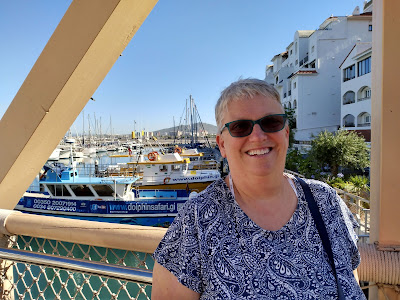


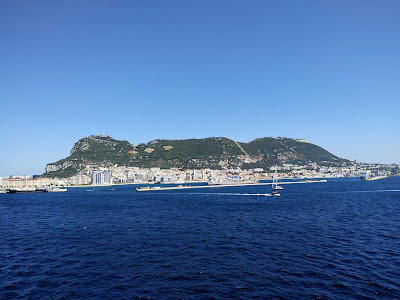










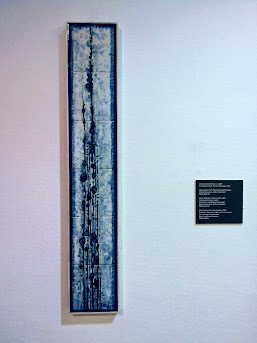








































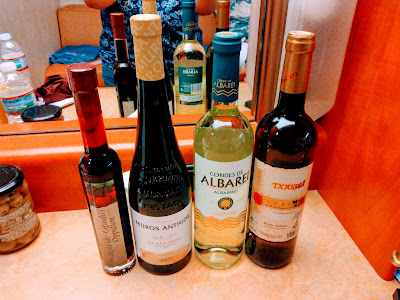





















































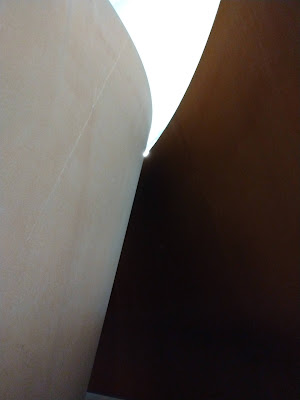
















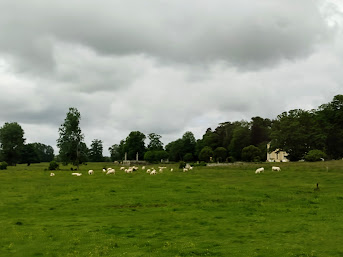
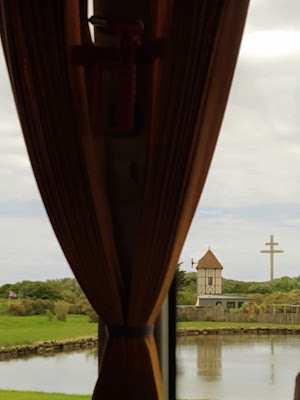
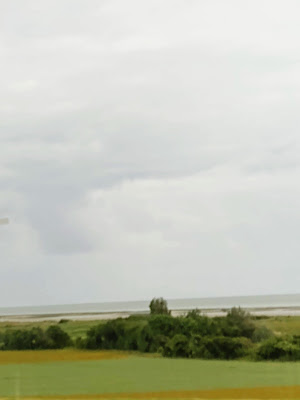





















































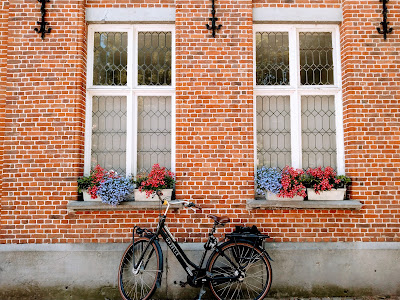












I'm happy you liked Brugge and I see you enjoyed some fries and waffles (I have to admit I usually don't eat those together ;) ). We also visited the cemetery when we visited Normandy all these years back and on our last trip we stayed near (and visited) Lisbon. Beautiful city with lots of things to do! Looking forward to your further adventures! ~Jürgen
ReplyDeleteLOL, it was a carb-y kind of day. One order of fries had a type of local stew served on top, but I don't remember the name. It was all delicious. We did, of course, have chocolate too, but I forgot to take a piccie. I'm glad you got to enjoy Lisbon! I wish I had had more time to research our family tree before visiting the cemetery. I'm certain there are distant cousins, on both John's and my side, that are buried there. Thanks for following along!
DeleteHello Emily! Thanks for sharing.💕
ReplyDelete